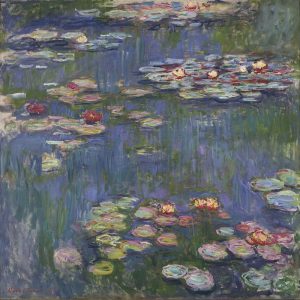The art critic Robert Hughes (1938-2012) bequeathed us one of the most comprehensible works for learning about the Pandora’s box that is contemporary art. The Shock of the New is the title of this now classic book, which was the result of a television series Hughes wrote and narrated for the BBC, broadcast in 1979-1980.

Among the many descriptions in The Shock of the New, I find particularly inspiring the one he devoted to the works that a mature Claude Monet painted at his country retreat near the village of Giverny, 80 kilometres from Paris. Of Monet’s immense oil paintings of a pond with water lilies, Hughes writes: “The Water Lilies are a prolonged examination of a reflective, waterlogged world, in which the sky is not visible except by reflection; the waters fill the whole frame […] The pond was as artificial as if it had been painted. Smooth, like a canvas. What it showed on its surface, the clouds and the leaves of the water lilies and a soft wind like feline footsteps, the dark patches of reflected foliage, the abysses of dark blue and the tremulous, opalescent reflections of sky light, all appear compressed at once in a shallow space, a skin, like the space where it is painted. The weeping willows caress that surface like brushes. There is no foreground, no background; instead, a web of connections”. And shortly afterwards, Hughes composes a memorable sentence:
The pond was a slice of infinity.

Because Monet’s series of Water lilies has all the capacity to suggest that infinity, a mathematical concept par excellence, holds. And it does so with similar force to the way infinity throbs throughout the length and breadth of one of the masterpieces of mathematics: Introduction to the Analysis of Infinities, by the great Leonhard Euler, endowing it with aesthetic value in the process.

Leave a Reply